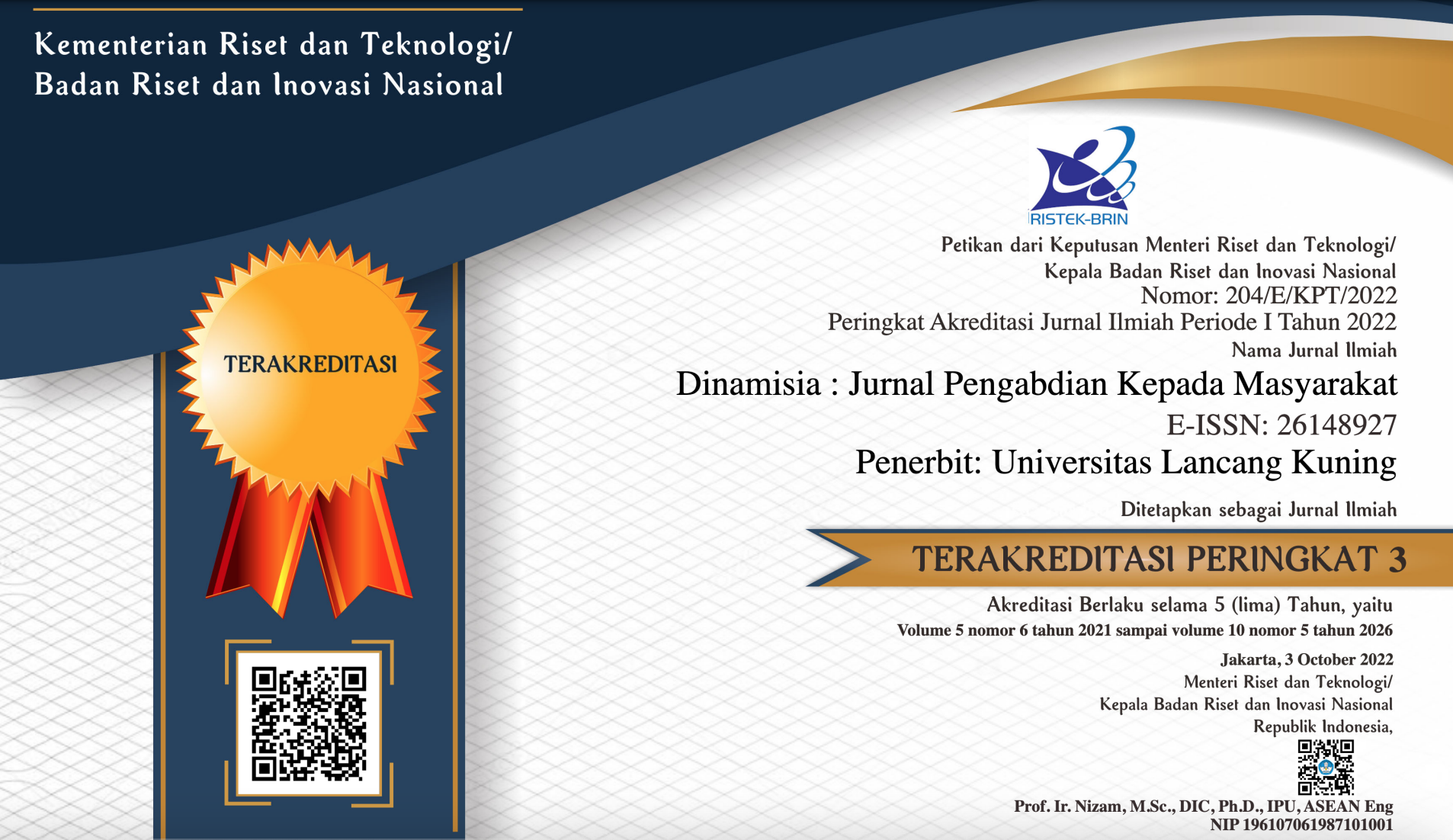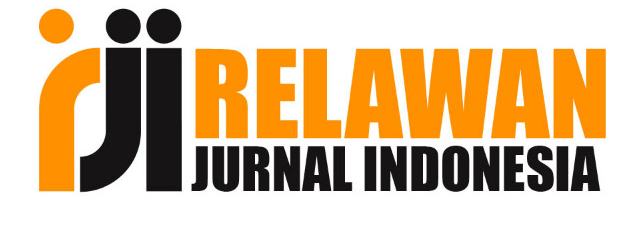Concrete Technology Competency Training with Blended Learning and Flipped Clasroom Learning Models
Pelatihan Kompetensi Teknologi Beton dengan model pembelajaran Blended Learning dan Flipped Clasroom
Abstract
Concrete technology competency training is a primary factor in the construction industry with the challenges of technological development. The Covid-19 pandemic period is a challenge in the training in adapting training methods. Concrete Technology Laboratory organizes community service for concrete technology competency training by utilizing Blended Learning (BL) and Flipped Clasroom (FC) learning models to meet these needs and challenges. The training participants totaled 11 people with various professional backgrounds in the construction world. Indicators of the success of community service methods are measured through pre-test, post-test, and activity evaluation surveys. From the results of the pre-test and post-test, community service activities provide a high level of success, indicated by the trend of increasing test scores, as well as the acceleration of participants' test time. The application of BL and FC learning models in community service provides the effectiveness of positive training achievements in the challenges of the Covid-19 pandemic.
Downloads
References
Abduh, M., Pribadi, K. S., Soemardi, B. W., & Chan, T.-K. (2022). Education, Training, and Certification. In Construction in Indonesia: Looking Back and Moving Forward (1st ed.). Routledge. https://doi.org/https://doi.org/10.1201/9781003149866
Arthur, R., & . D. (2019). A Need Assessment on Competency Certification of Construction Workers in Indonesia. KnE Social Sciences, 3(12), 162. https://doi.org/10.18502/kss.v3i12.4082
BPS. (2021). Statistik Konstruksi 2021. https://www.bps.go.id/publication/download.html?nrbvfeve=MTBiYzg2N2NmNTI4ZDM5YWYzMDdhNjQ0&xzmn=aHR0cHM6Ly93d3cuYnBzLmdvLmlkL3B1YmxpY2F0aW9uLzIwMjIvMTIvMTkvMTBiYzg2N2NmNTI4ZDM5YWYzMDdhNjQ0L3N0YXRpc3Rpay1rb25zdHJ1a3NpLS0yMDIxLmh0bWw%3D&twoadfnoarfeauf=MjAyM
Campillo-Ferrer, J. M., & Miralles-Martínez, P. (2021). Effectiveness of the flipped classroom model on students’ self-reported motivation and learning during the COVID-19 pandemic. Humanities and Social Sciences Communications, 8(1). https://doi.org/10.1057/s41599-021-00860-4
Çelik, H., Pektaş, H. M., & Karamustafaoğlu, O. (2021). The Effects of the Flipped Classroom Model on the Laboratory Self-Efficacy and Attitude of Higher Education Students. Electronic Journal for Research in Science & Mathematics Education, 25(2), 47–67.
Chen, J., Zhou, J., Wang, Y., Qi, G., Xia, C., Mo, G., & Zhang, Z. (2020). Blended learning in basic medical laboratory courses improves medical students’ abilities in self-learning, understanding, and problem solving. Advances in Physiology Education, 44(1), 9–14. https://doi.org/10.1152/advan.00076.2019
Gustian, E., Milyardi, R., & Lesmana, C. (2022). Analysis of Benefits and Barriers Factors in the Implementation of Building Information Modeling (BIM) in Building Construction for Contractor. Jurnal Teknik Sipil Dan Perencanaan, 24(2), 158–167.
Milyardi, R. (2020). Comparison of the Characteristics of Construction Risk Management in State-owned and Private Contractors. Jurnal Teknik Sipil, 16(1 SE-Articles), 12–37. https://doi.org/10.28932/jts.v16i1.2399
Milyardi, R., Lesmana, C., & Tangkelayuk, N. R. (2020). Pengenalan Konsep Bangunan Tahan Gempa Melalui Kompetisi Rancang Bangun Menara Air Tahan Gempa. Prosiding SENDIMAS 2020, 72–76. https://lppm.uajy.ac.id/sendimas2020/
Ożadowicz, A. (2020). Modified blended learning in engineering higher education during the COVID-19 lockdown-building automation courses case study. Education Sciences, 10(10), 1–20. https://doi.org/10.3390/educsci10100292
Pribadi, K. S., & Chan, T.-K. (2022). Construction Workers and the Informal Sector. In Construction in Indonesia: Looking Back and Moving Forward. Routledge. https://doi.org/https://doi.org/10.1201/9781003149866
Pribadi, K. S., Soemardi, B. W., Ong, S., & Suraji, A. (2017). Developing Construction Industry Human Resources in Indonesia: Issues and Challenges. 2017 Asia Construct Conference. http://www.asiaconst.com/asiacwp/wp-content/uploads/2017/12/22nd_Indonesia_Theme-Paper.pdf
Qutob, H. (2022). Effect of flipped classroom approach in the teaching of a hematology course. PLoS ONE, 17(4 April), 1–8. https://doi.org/10.1371/journal.pone.0267096
Riyanda, A. R., Agnesa, T., Wira, A., Ambiyar, A., Umar, S., & Hakim, U. (2022). Hybrid Learning: Alternatif Model Pembelajaran di Masa Pandemi Covid-19. Jurnal Basicedu, 6(3), 4461–4469. https://doi.org/10.31004/basicedu.v6i3.2794
Supriatna, U. (2021). Flipped Classroom: Metode Pembelajaran Tatap Muka Terbatas pada Masa Pandemi Covid-19. Ideas: Jurnal Pendidikan, Sosial, Dan Budaya, 7(3), 57. https://doi.org/10.32884/ideas.v7i3.408
Yanti, G., Z, Z., & Megasari, S. W. (2019). Pelatihan Penjadwalan dengan Ms Project Bagi Penyedia Jasa Konstruksi di Kota Pekanbaru. Dinamisia : Jurnal Pengabdian Kepada Masyarakat, 3, 125–134. https://doi.org/10.31849/dinamisia.v3i2.2824


















